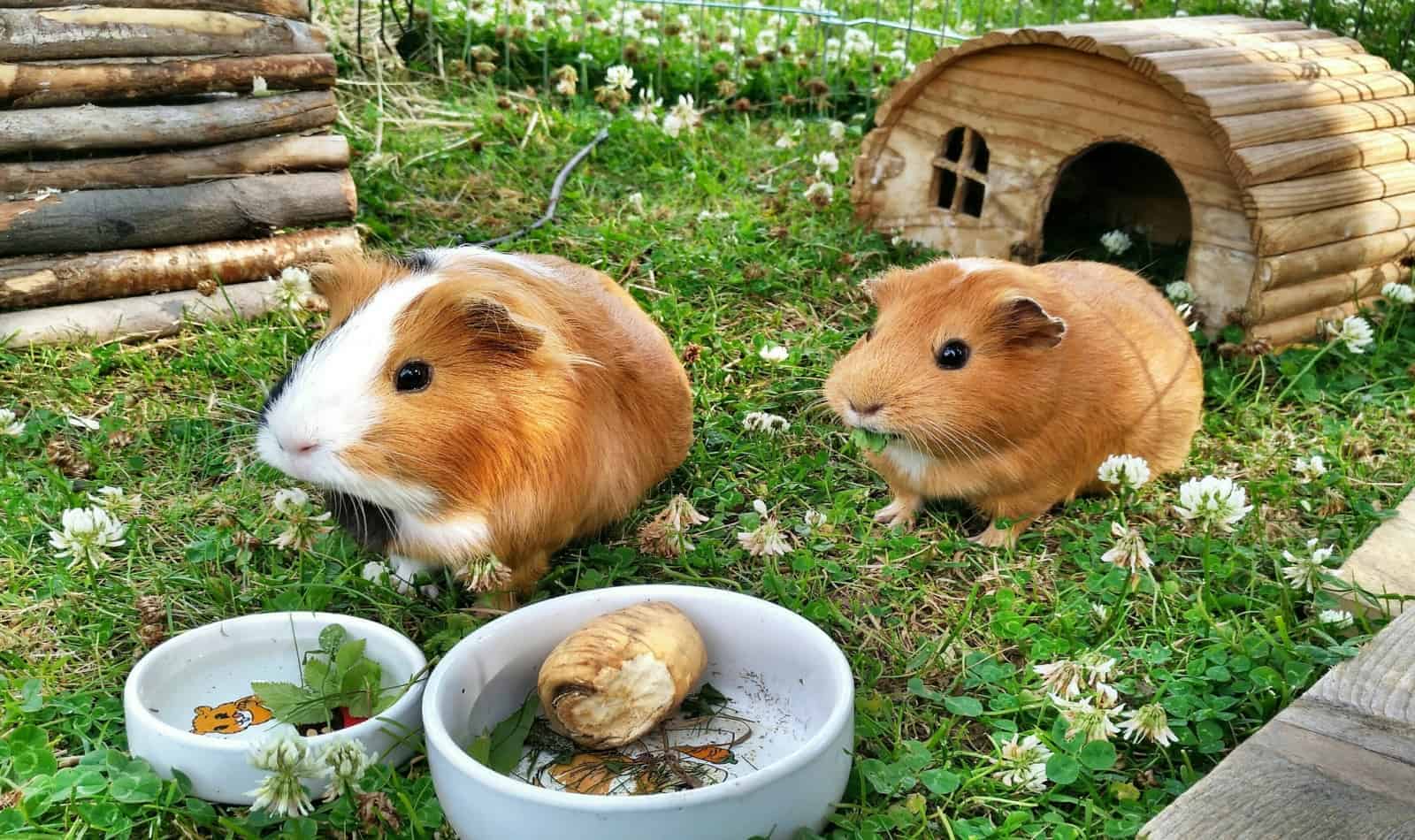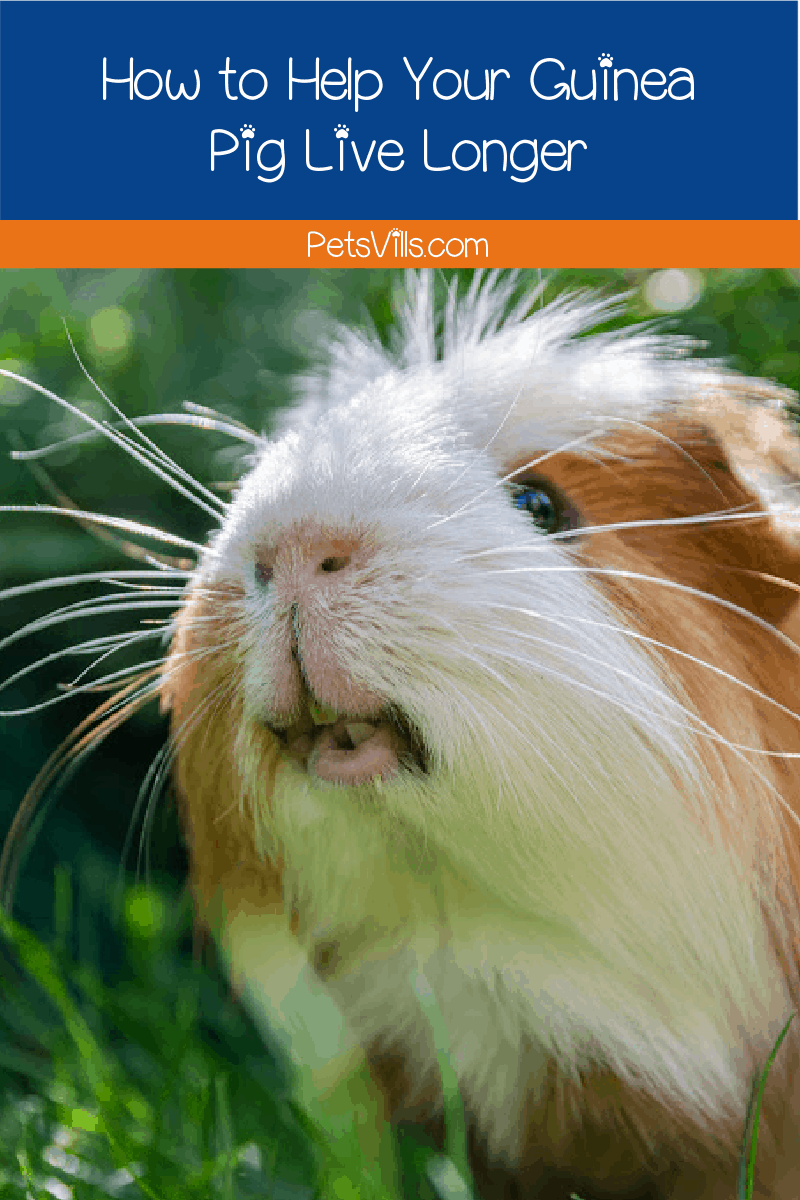Wondering about the most important things to put in your guinea pig habitat?
If you want keep your cavy happy, you have to do more than just set up a cage, you need to give them a true home.
So, with that in mind, we’re going over the absolute essentials you’ll want to grab before you bring your piggy home.
Let’s dive in!
Top Picks
If you just want some quick ideas of things to put in your guinea pig habitat, check out our table below with our top picks.
FYI, this post uses affiliate links. If you make a purchase through them, we earn a small commission at no extra cost to you.
Table could not be displayed.THINGS TO PUT IN YOUR GUINEA PIG HABITAT
Bringing a new pet into your life requires a lot of planning, and part of that is picking out the perfect home within your home.
Guinea pigs are usually kept in habitats. We use the word “cages” interchangeably, but they’re not really the same.
A cage is a more like a temporary holding cell. We want to create a long-term home for our furry friends. That’s where a habitat comes in.
We talked about the right guinea pig habitat in more detail in the past, but let’s just quickly recap.
At the very least, your piggy’s home should be 35″ (l)* x 27″ (w) for one guinea pig. If you are bringing home a pair of them, increase the dimensions by at least 80%.
Bigger is ALWAYS better, though. Those minimum dimensions are basically what they need to survive, but not necessarily thrive.
So, if you have space, go ahead and get something truly grand for them.
Let me be honest and blunt here: the vast majority of cages sold on Amazon and pet store websites are too small.
The only one that even comes close is this one by Midwest. Even that one feels a bit small to me.
Your best bet is to go through a smaller independent store that specializes in habitats.
We got ours through the Guinea Pig Cage Store, but there are others. Just do your research.
Now that we have a great habitat, what should we put in it? Let’s find out!
#1 A hideout
Have a small hideout (big enough for the guinea pig to fit in) within the habitat.
I personally prefer washable fleece hideout caves for my cavies, but hideouts made of sticks are also great.
Or you can simply place a flowerpot (empty) in the corner on its side. Even a simple cardboard box will do. Just make sure it’s clean.
Anytime your pet feels afraid, she’ll go and hide in this tiny place. This provides your piggy with a sense of safety and will help the guinea pig to calm down.
#2 Plenty of hay
Guinea pigs need hay…and a lot of it! This will probably be your most frequent purchase (and your greatest overall expense beyond the habitat).
Spread it around at the bottom of the cage and leave a small stack on the side. Timothy hay, oat grass, and orchard grass are some options to try.
My personal favorite is Kaytee Timothy Hay. It’s fairly affordable and comes from a reputable company.
You can either just place a fist-sized chunk of it in a corner of the habitat or use a hay feeder, like this one.
Check out the video below for a guide to all the types of hay.
#3 chew toys
Like most of the rodent family, little animals have teeth that continuously grow throughout their lives.
Without something to chomp on, they can actually suffer from overgrown teeth.
Give them a handful of chew toys for their cage. Just make sure you’re buying toys that are actually made for cavies and other small pets.
I personally love this assortment by JanYoo. Aside from the rope toy, everything is left natural and without artificial dyes.
Cavies are also explorers. So, you can even hide some toys throughout their habitat- under hay, in little tunnels, etc. My guinea pigs love it!
Along with purchasing chew toys, you can also make plenty of your own. Check out the video below for some ideas.
#4 fresh water
There is a debate about whether water bowls are safer or water bottles. You can try either but see that your pet is happy with your choice.
The water bowl has to be kept at a higher level than their play area so that it doesn’t become contaminated as easily. The bowl also has to be heavy and sturdy.
A bottle would be easier but ensure that the neck is not too big that the guinea pigs end up with water in their lungs rather than their tummies.
Replace the water daily to keep it fresh at all times.
#5 guinea pig food
A bit obvious, I know, but food is definitely one of the most important things to put in a guinea pig habitat!
High-quality pellets are a no-brainer. I like Wild Harvest Advanced Nutrition, but Kaytee also makes a great pellet.
Feeding your cavy doesn’t end with plopping pellets in a bowl, though. For a truly long and happy life, they also need a diverse diet of veggies and fruits.
Aim for one cup of fresh produce each day per pig. Green leafy vegetables (think romaine and green leaf lettuce) should make up the bulk of it.
Then, rotate through the list of other fruits and veggies that are safe for cavies. Pay attention to guidelines for how often they can eat each type.
conclusion
Focus on creating a habitat rather than just setting up a cage for your guinea pigs.
When we bring home a pet, we take on the responsibility of giving them the best life possible. We don’t merely want them to survive, but rather thrive.
These 5 things will go a long way towards giving your cavy the best life possible.



